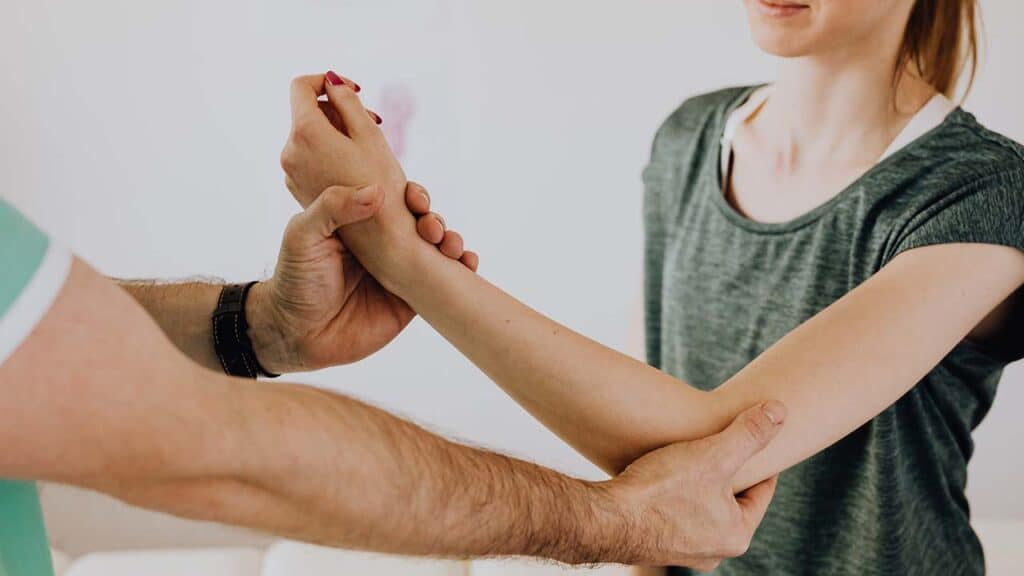
The condition commonly known as “tennis elbow” manifests as severe pain and is not limited to professional athletes. It can affect anyone who strains their elbow during intense work.
Classic tennis elbow is an enthesopathy of the wrist extensor muscles, which involves overuse changes in the tendon attachments to the bone. These changes result from repetitive micro-traumas. Often, it is accompanied by overloading of the wrist and finger muscles, impaired handgrip, and dysfunction of the upper limb. The condition is most commonly caused by prolonged static or dynamic work with low resistance. Those most commonly affected by this condition are programmers, IT specialists, office workers, and higher-ranking corporate employees. Dentists, masons, and assemblers are also frequently affected. Therapy is primarily recommended for movement impairments in the joint, muscle dysfunction, forearm and arm pain. As the name suggests, tennis players are also prone to this condition, but it typically occurs in amateur players. The main cause among them is the so-called “delayed” backhand or improper “elbow-leading” movement. Other factors contributing to the condition include poorly fitted racket grip, incorrect racket handling, weakness of the upper limb, shoulder, and elbow muscles.
Diagnosing the condition relies mainly on patient history and the basic diagnostic scheme performed by a physiotherapist. Precisely determining the damaged tissue is essential. Additional diagnostic tests such as X-rays (RTG) and ultrasonography (USG) are also conducted.
The fundamental principle in the treatment process is rest and regeneration of the damaged tissue. Physiotherapeutic methods, such as manual therapy, are employed to address reversible functional disorders of the musculoskeletal system. This therapy involves deep tissue massage, which promotes movement and tissue circulation. Manual therapy, with its numerous techniques, allows for precise treatment of damaged tissues and is safe and non-invasive for the patient. Additionally, home exercises that involve active muscle work are recommended.
However, the most crucial aspect in managing this condition is correctly identifying the damaged structure responsible for the clinical symptoms. Pain on the lateral side of the elbow can have various origins. During the rehabilitation process, a physiotherapist may address the musculofascial structures directly related to the elbow and also examine other areas distant from the pain site. Depending on the physical or occupational activity that contributed to the situation, it should be limited. It is also advisable to consult a physiotherapist about improving ergonomic conditions at work or modifying the training plan.

